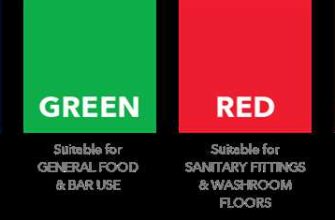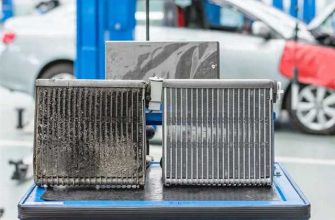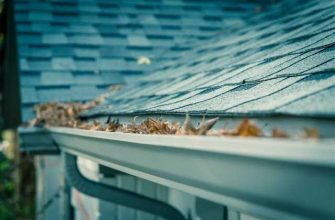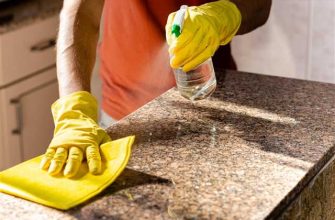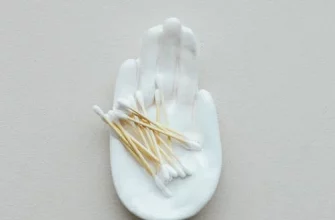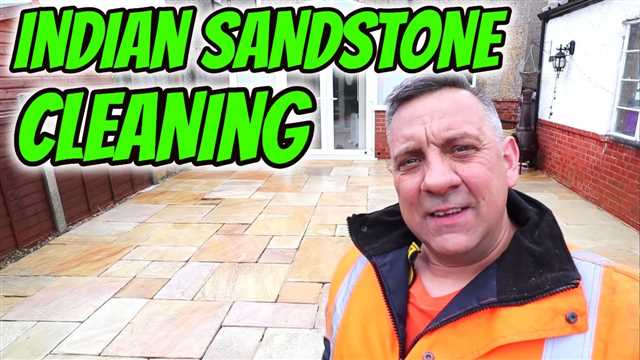
Are you struggling with keeping your sandstone patio clean and looking its best? Don’t worry, we’ve got you covered with some helpful tips and tricks on how to effectively clean your sandstone patio. Whether you have Indian sandstone slabs or any other type of sandstone paving, these cleaning methods will work wonders.
One of the most common questions when it comes to cleaning sandstone is, “What product should I use?” There are several options available, but one popular choice is Jeyes Fluid Indian Sandstone Cleaner. This specially formulated product is designed to remove tough stains and grime from your patio, leaving it looking fresh and new.
If you’re dealing with stubborn stains, such as oil or grease, you may want to try using bleach. However, be cautious when using bleach on sandstone, as it can be harsh and may cause discoloration. It’s always best to test a small area first to ensure it won’t damage your patio.
Another way to clean your sandstone patio is by using a cleaning solution made from a mixture of water and vinegar. This natural cleaning method is gentle on your sandstone and can effectively remove dirt, grime, and algae. Simply mix equal parts water and vinegar, apply the solution to your patio, and use a brush or pressure washer to wash away the dirt.
If you’re dealing with algae growth on your Indian sandstone, you can also try cleaning it with sodium hypochlorite. This chemical compound is commonly used to remove algae and can be purchased from your local hardware store. Remember to follow the instructions carefully and take the necessary safety precautions when using any chemical cleaning product.
When it comes to regular maintenance, it’s important to give your sandstone patio a good wash every now and then. Simply use a mild detergent mixed with water and a brush or pressure washer to remove dirt and grime. Avoid using abrasive materials or harsh chemicals, as they can damage the surface of your sandstone.
So, whether you have Indian sandstone slabs or any other type of sandstone paving, follow these tips and tricks to keep your patio looking clean and beautiful all year round. Remember to be cautious when using cleaning products, and always test a small area first to ensure it won’t damage your patio. With proper care and maintenance, your sandstone patio will continue to be a stunning addition to your outdoor space.
- Does bleach damage sandstone paving?
- What is bleach and is it safe to use on sandstone?
- What is the best way to clean sandstone paving?
- How to clean algae off Indian sandstone?
- Conclusion
- Is it OK to pressure wash sandstone?
- Alternative ways to clean a sandstone patio:
- What is the best way to clean sandstone paving slabs?
- 1. Choose the right cleaning product
- 2. Dilute the cleaner
- 3. Test in an inconspicuous area
- 4. Apply the cleaner
- 5. Scrub and rinse
- 6. Prevent future stains
- What is the best product to clean sandstone patio?
- Best sandstone cleaner
- Cleaning sandstone with vinegar
- Cleaning Indian sandstone with sodium hypochlorite
- What does the best Indian sandstone cleaner screwfix?
- How to remove stains from sandstone patio?
- How to clean algae off Indian sandstone?
- Does pressure washing damage sandstone paving?
- Is it ok to use Jeyes Fluid Indian Sandstone Cleaner on my patio?
- What is the best product to clean Indian sandstone?
Does bleach damage sandstone paving?
When it comes to cleaning your sandstone patio, it’s important to use the best products and methods to ensure effective cleaning without causing any damage. One common product that people often consider using is bleach. However, before using bleach on your sandstone paving, it’s important to understand the potential risks involved.
What is bleach and is it safe to use on sandstone?
Bleach is a chemical compound that is commonly used as a disinfectant and cleaning agent. It is known for its ability to remove stains and kill bacteria. However, when it comes to sandstone paving, bleach can be quite damaging.
Sandstone is a natural stone that is porous and delicate. It can be easily etched or discolored by harsh chemicals. Bleach, being a strong chemical, has the potential to cause irreversible damage to the surface of the sandstone.
What is the best way to clean sandstone paving?
Instead of using bleach, it is recommended to use a specialized sandstone cleaner that is specifically designed for cleaning sandstone paving. These cleaners are formulated to effectively remove dirt, stains, and algae without causing any damage to the stone.
The best sandstone cleaner will typically be pH-neutral and free from harsh chemicals. It should be safe to use on all types of sandstone, including Indian sandstone, and leave the surface clean and revived.
How to clean algae off Indian sandstone?
Algae can be a common problem on sandstone patios, especially in damp and shady areas. To effectively clean algae off Indian sandstone, follow these steps:
- Start by removing any loose debris, such as leaves or dirt, from the surface of the sandstone.
- Mix a solution of sandstone cleaner and water according to the manufacturer’s instructions.
- Apply the solution to the affected areas using a brush or sprayer.
- Allow the cleaner to sit for a few minutes to penetrate and loosen the algae.
- Scrub the area with a brush to remove the algae.
- Rinse the sandstone thoroughly with clean water to remove any remaining cleaner or algae.
By following these steps and using a specialized sandstone cleaner, you can effectively clean algae off Indian sandstone without causing any damage.
Conclusion
In conclusion, using bleach to clean sandstone paving is not recommended as it can cause damage to the stone. It is best to use a specialized sandstone cleaner that is pH-neutral and safe for use on sandstone. By following the proper cleaning techniques, you can effectively clean your sandstone patio without compromising its beauty and longevity. Remember to always follow the manufacturer’s instructions when using any cleaning products on your sandstone paving.
Is it OK to pressure wash sandstone?
Pressure washing is a popular method for cleaning various outdoor surfaces, including sandstone patios. However, when it comes to sandstone, using a pressure washer requires caution.
Sandstone is a delicate and porous natural stone that can be easily damaged if not cleaned properly. The high pressure from a pressure washer can cause the sandstone to erode or crack, leading to irreversible damage. Additionally, if the sandstone is already weakened or has loose particles, the pressure washer can dislodge them, further compromising its integrity.
While pressure washing can be effective in removing dirt and stains from some hard surfaces, it is generally not recommended for sandstone. There are alternative methods that are safer and more suitable for cleaning sandstone patios.
Alternative ways to clean a sandstone patio:
- Use a soft-bristled brush or broom to sweep away dirt and debris from the surface of the sandstone.
- Create a cleaning solution by mixing warm water with a small amount of mild liquid dish soap or specially formulated Indian sandstone cleaner.
- Apply the cleaning solution to the sandstone surface and gently scrub using a soft brush or mop.
- Rinse the patio thoroughly with clean water to remove any remaining soap or cleaner residue.
- If stains persist, you can try using a mixture of water and vinegar or a diluted bleach solution. However, test these solutions on a small, inconspicuous area first to ensure they do not cause any damage or discoloration.
- Another option is to use sodium hypochlorite, commonly known as bleach, as it can help remove stubborn stains and algae. Again, test it on a small area first and follow the instructions on the product carefully.
It is important to remember that prevention is always better than cure when it comes to maintaining the appearance of your sandstone patio. Regularly sweeping away debris and addressing stains promptly will help keep your patio looking clean and vibrant for years to come.
What is the best way to clean sandstone paving slabs?
Sandstone is a popular choice for paving slabs due to its natural beauty and durability. However, over time, sandstone can become dirty and stained, detracting from its appearance. To keep your sandstone paving slabs looking their best, regular cleaning is essential. Here are some tips on the best way to clean sandstone paving slabs:
1. Choose the right cleaning product
When it comes to cleaning sandstone, it’s important to use a product specifically designed for this type of stone. Avoid harsh chemicals such as bleach or vinegar, as they can damage the sandstone. Instead, opt for a gentle cleaner that is safe to use on sandstone. There are many Indian sandstone cleaners available on the market, such as Jeyes Fluid Indian Sandstone Cleaner or Indian sandstone cleaner Screwfix. These products are formulated to effectively clean sandstone without causing any damage.
2. Dilute the cleaner
Before applying the cleaner to your sandstone paving slabs, be sure to read the instructions carefully. Some cleaners may need to be diluted with water before use. Diluting the cleaner helps to ensure that it is not too strong and will not cause any unwanted effects on the sandstone.
3. Test in an inconspicuous area
Before using the cleaner on the entire surface of your sandstone patio, it’s a good idea to test it in a small, inconspicuous area. This will allow you to check if there are any adverse reactions or discoloration. If the cleaner doesn’t cause any problems in the test area, you can proceed with cleaning the rest of the patio.
4. Apply the cleaner
Once you have prepared the cleaner and tested it, you can apply it to the sandstone paving slabs. Use a brush or a soft cloth to apply the cleaner to the surface. Make sure you cover all areas, paying extra attention to any stained or dirty spots. Allow the cleaner to sit on the sandstone for the recommended time, usually a few minutes, to allow it to break down dirt and grime.
5. Scrub and rinse
After the cleaner has had time to work, scrub the sandstone surface with a brush or a soft cloth. This will help to loosen any dirt and stains. Once you have scrubbed the entire patio, rinse it thoroughly with clean water. Use a hose or a pressure washer on a low setting to ensure all traces of the cleaner are removed.
6. Prevent future stains
To keep your sandstone patio looking clean and stain-free for longer, consider applying a sealer once it is dry. A sealer will create a protective barrier on the surface of the sandstone, helping to prevent future staining. It is recommended to reapply the sealer every few years to maintain its effectiveness.
By following these steps and using the right cleaning products, you can effectively clean your sandstone paving slabs and keep them looking their best for years to come.
What is the best product to clean sandstone patio?
When it comes to cleaning your sandstone patio, choosing the right product is crucial. The quality of the product will determine how effectively and safely you can clean your patio slabs.
Best sandstone cleaner
Sandstone is a delicate material that requires gentle but effective cleaning methods. One of the best sandstone cleaners on the market is the Jeyes Fluid Indian Sandstone Cleaner. This product is specifically formulated to clean and protect sandstone surfaces without causing any damage.
Cleaning sandstone with vinegar
If you prefer a more natural approach, you can use vinegar to clean your sandstone patio. Mix equal parts water and white vinegar, and apply the solution to the stained areas. Let it sit for a few minutes, then scrub with a soft brush and rinse thoroughly. Vinegar is an effective stain remover and can help remove algae and other organic growth from your sandstone paving.
Cleaning Indian sandstone with sodium hypochlorite
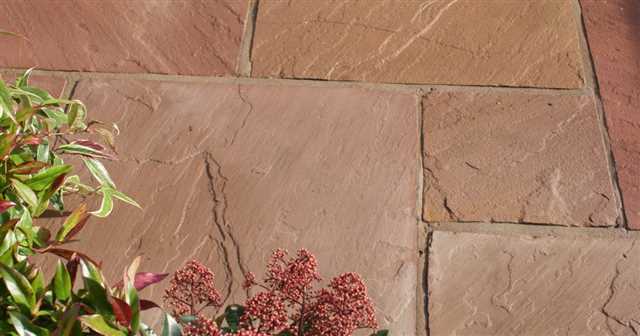
Sodium hypochlorite, commonly known as bleach, can be used to clean Indian sandstone. However, it’s important to dilute the solution and use it sparingly to avoid damaging the stone. Mix one part bleach with nine parts water, apply the solution to the stained areas, and scrub gently. Rinse thoroughly afterward to remove any residue.
What does the best Indian sandstone cleaner screwfix?
The best Indian sandstone cleaner available at Screwfix is the Jeyes Fluid Indian Sandstone Cleaner. It is a highly effective product that is safe to use on all types of sandstone patios. It provides excellent cleaning results without causing any damage to the stone.
How to remove stains from sandstone patio?
To remove stains from a sandstone patio, start by identifying the type of stain and selecting the appropriate cleaning method. For organic stains such as algae or moss, you can use a mixture of water and vinegar or a diluted bleach solution. For oil-based stains, you can try using a degreasing agent or a poultice made from baking soda and water. It’s important to test any cleaning solution on a small, inconspicuous area before applying it to the entire patio.
How to clean algae off Indian sandstone?
To clean algae off Indian sandstone, you can use a combination of white vinegar and water. Mix equal parts of vinegar and water, apply the solution to the affected areas, and scrub gently with a soft brush. Rinse the patio thoroughly to remove any residue. It’s important to clean algae as soon as it appears to prevent it from spreading and causing further damage.
Does pressure washing damage sandstone paving?
Pressure washing can be an effective way to clean sandstone patios, but it can also damage the stone if not used correctly. High-pressure jets of water can erode the surface of the sandstone and cause it to become more susceptible to staining and other damage. If you choose to use a pressure washer, make sure to use the lowest pressure setting and maintain a safe distance from the surface. Avoid using a pressure washer on fragile or damaged areas of the sandstone.
Is it ok to use Jeyes Fluid Indian Sandstone Cleaner on my patio?
Yes, it is perfectly safe to use Jeyes Fluid Indian Sandstone Cleaner on your patio. This specially formulated cleaner is designed to effectively clean and protect sandstone surfaces without causing any damage. It is suitable for both regular cleaning and removing stubborn stains. Follow the instructions on the product label for the best results.
What is the best product to clean Indian sandstone?
The best product to clean Indian sandstone is the Jeyes Fluid Indian Sandstone Cleaner. This product is specifically formulated to clean and protect Indian sandstone without causing any damage. It is effective in removing dirt, grime, algae, and other stains from the surface of the stone. Additionally, it helps to repel water and protect the sandstone from future staining.
In conclusion, using the right product is essential when cleaning your sandstone patio. Whether you choose a dedicated sandstone cleaner like Jeyes Fluid Indian Sandstone Cleaner or opt for natural alternatives like vinegar, always remember to test the product in a small area before applying it to the entire patio. Regular cleaning and maintenance will ensure that your sandstone patio remains beautiful and well-preserved for years to come.

